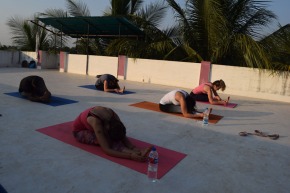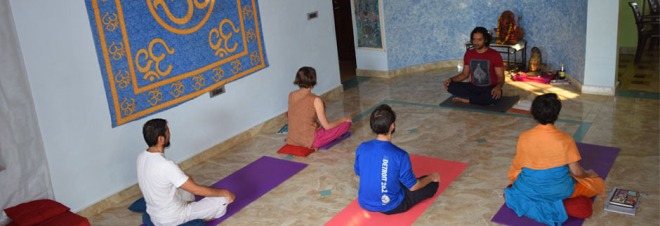Condition and Causes
Lower Back Pain is experienced by everyone at one point or other. It is the second most common reason for people to visit specialist doctors, topmost for chiropractors, middle age deformities and movement crisis before 50’s. The most common zone is ligaments, back muscles and joints in lumbar spine region and surrounding tissues and muscles. Back pain can be a symptom of different illness and conditions. In many cases, doctors can’t find a cause for the pain. Common explanations could be direct back injury like sprain and strain, long term chronic back overload condition like in obesity, bad posture and lifestyle, short term overload due to stress, lifting heavy loads and pregnancy. Diseases and injury to the spinal vertebrae due to accidents can also be a cause of back pain conditions. Osteoporosis, degenerative arthritis is few other common causes for acute back problems. Psycho emotional imbalances are also a major contributing factor which mostly triggers back pains in more than 70 percent of cases.
Seemingly trivial events like a sneezing or lifting a weight or bending down to pick something or getting out of the chair can start a bout of the back pain which only gets worst with time if left untreated. Generally more severe condition is Sciatica pain, condition most commonly caused by the bulged disk between two vertebrates which acts as the shock absorbers. The bulged disk exits out and compresses the spinal nerve root, causing pain which travels down to the hips and sometimes to the feet. Sciatica pain can be with or without back pain though.
How Yoga helps treating the back pain problems
Normally Physicians work with a one fit common approach of treating back pain conditions which doesn’t work in most of the cases. From a Yogic perspective, there are many causes of back pains starting from degenerative arthritis, osteoporosis, fractures, bad posture, scoliosis, injuries to the back in past or poorly aligned ribs and vertebrae causing muscle spasms and strains. Whatever is the cause the same approach or surgery will certainly not cure the same condition arising out of different causes. It is one of the conditions that modern medicine has failed to treat completely mostly due to ineffectiveness in determining the cause in the first place. Surgeries of back have given more back problems in most cases and almost in 90 percent of cases they recurred and could have completely avoided. Even the herniated disks, majority of people recover without surgeries in six to eight weeks through holistic Yoga therapy. It’s better to consult your Yoga therapist before lying down on the surgeon’s table. Yoga therapist would examine all the underlying causes like posture, stress level, emotional mental state, work condition and environment. Failure to address these issues would only lead to failure of treatment due to mind and body connection.
The role of stress has not been considered as a potential cause of the back conditions by the conventional physicians but it is considered to be the most common reason for back pains in holistic medicine and Yoga. The stress can create spasm which can cause pain in the back directly. Many healers, physicians and holistic doctors believe that it’s entirely psychological that it is directly related to the mental tension and if you can go to the root cause of stress and eliminate it, it can disappear within few days.
From the Yogic perspective, the other important factors are posture, muscle tightness and muscle weakness in the back region apart from stress and emotional imbalances. Lack of body awareness is also the most common reason in Yoga for most of the painful conditions.
Role of Posture
In Yoga, the overall state of the person’s health and fitness levels can be ascertained by just checking the posture in the standing and sitting positions. Posture is critical and mostly, we find bad posture and misalignment of neck shoulders with the spine forming a bad awkward curve instead of the healthy S curve. Spine is a dynamic structure of the body. When these healthy curves flatten or arch too much then they can compress the spinal disks and eventually spinal nerves giving rise to the painful condition.
Some people get back pain because of the excessive flexibility in their joints. Pain arises due to excessive arching of lumbar spine and increasing the normal lower spine curve. This condition is known as ‘Sway Back’.
How Asanas Cures
Asanas help in improving the blood circulation by mobilizing the stagnant impure blood out of the lumbar spinal region and replaces nutrient rich pure oxygenated blood. This helps in curing the strained and spasms existing in those areas. Disks don’t have their independent blood supply; they are dependent on the surrounding structures for receiving nutrients.
Role of Awareness and Breath
Awareness of breath while breathing means breathing fuller, deeper and slower. Breath awareness and quality of breath is directly linked with the quality of life. Deeper inhalations and exhalations using full abdominal breathing relax the back muscles by reducing the activity of the stress response system. It massages the spinal column and supply rich oxygenated blood full of nutrients. Good Yoga asana practice doesn’t just improve the functioning of the physical body but also engage the mind actively. They bring attention to what you are doing which is awareness. Healing happens with awareness not just with mechanical exercises or stretches or pills you consume.
Sequence of the Poses for Sciatica and Lower Back Pain
– Urdhva Tadaasana (Palm Tree Pose) – 3 times for 5 breaths each in the final raised position
– Triyaka Tadasana (Swaying Palm Tree Pose) – 3 times on each side
– Kati chakrasana (Waist Rotating Pose)- 3 reps on each side with full exhalation and inhalation on subsequent twists
– Trikonasana (Triangle Pose)- 5 Breaths on each side
– Virbhadrasana 1 (Warrior 1) – 3 to 5 breaths on each side
– Prasirita Padoottansana (Intense wide leg stretch) – 3 to 5 breaths
– Vrukshasana (The tree Pose) – 3 to 5 breaths each leg
– Balasana (Child’s Pose) – 5 to 10 breaths (relaxation)
– Supported Paschimottasana ( Supported Posterior stretch)- 3 to 5 breaths supporting on cushions in the front resting the forehead gently without straining and stretching too much from lower back or wasit
– Urdhva Mukha Janursirshasana (Head to knee Variation) – 3 to 5 breaths without arching the spine
– Shashankasana (Rabbit’s Pose) – 5 to 7 breaths . Take a support for the forehead and don’t try to force your nose or forehead touching on the floor n the front.
– Bidalasana (Cat and Cow stretch Pose)- 10 to twenty times slowly and gently with breath
Awareness)
– Bhujangasana Variation (cobra variation) ( Sarpasana ): Arms tied just above the hips at the back with gentle upward arch of the back
Supine Hip rotator Pose, 3 times to each side
– Marichyasana C – 3 to 5 breaths on both sides without overstretching neck and lower abdomen
– Viparita Danadasana ( 3 to 5 breaths with supported chair for the head )
– Supine Pose – Knees bent and the soles of the feet against the wall, press the feets on the wall as you exhale and release the pressure from the feet as you inhale. Repeat several times.
– Final relaxation: Shavasana (10 min)
– Mindful Meditation ( 10 Min morning and evening)
– Yoga Nidra (In case of insomnia and disturbed sleep due to stress and anxiety)
– Pranayama (Breathing Exercises)
– Full Yogic Breath (Clavicular, Thoracic and abdominal breathing)
– Nadi shodhana (Alternate Nostril Breathing- Without retention or with short retention)
5 to 10 rounds very slowly with focus and awareness on breath)
– Ujjayi (Victorious Breath) – slow 10 to 15 breaths
Contra indications and Special Considerations
Above sequence of poses are designed for back problems but sequence would change as per the condition of the patient. Only a competent Yoga teacher and Therapist can decide which variations are useful for a specific case after examining emotional stress response, condition, environment and mental situation of the patient.
Forward bends especially seated forward bends are usually not recommended for mild to severe cases of sciatica and lower back pain conditions. It can compress the nerve roots more and aggravate sciatica. Seated forward bends are more challenging than standing forward bends as bending forward when hips are tipped on the floor is harder than while standing as gravity helps. The safest back bends are lying on the back and bringing legs on the top or close to the chest like in supported boat pose if done dynamically or Supine Hip Rotators Pose. The best approach is to have an experienced teacher or therapist look at you and decide for you rather you. The Key is slow and patient approach and avoiding any sudden transitions as it might take 6 to 9 weeks for full recovery based on the gravity and extent of one’s condition.
Source: Blogs Of Yogi Pratik
 nly the perfection level gained at the end of training and the personal experience during the training reveals the truth. The curriculums of yoga instructor course Goa differ at large; hence, you should explore and compare the depth of curriculums and the schedule. Asanas, Hatha Yoga, pranayama, anatomy physiology, understanding of disorders & diseases, case studies and application of right approach etc are the essential parts of Yoga Therapy instructor course. International repute of yoga school for providing Yoga therapy TTC means a lot; explore the history and performance to confirm the facts.
nly the perfection level gained at the end of training and the personal experience during the training reveals the truth. The curriculums of yoga instructor course Goa differ at large; hence, you should explore and compare the depth of curriculums and the schedule. Asanas, Hatha Yoga, pranayama, anatomy physiology, understanding of disorders & diseases, case studies and application of right approach etc are the essential parts of Yoga Therapy instructor course. International repute of yoga school for providing Yoga therapy TTC means a lot; explore the history and performance to confirm the facts.